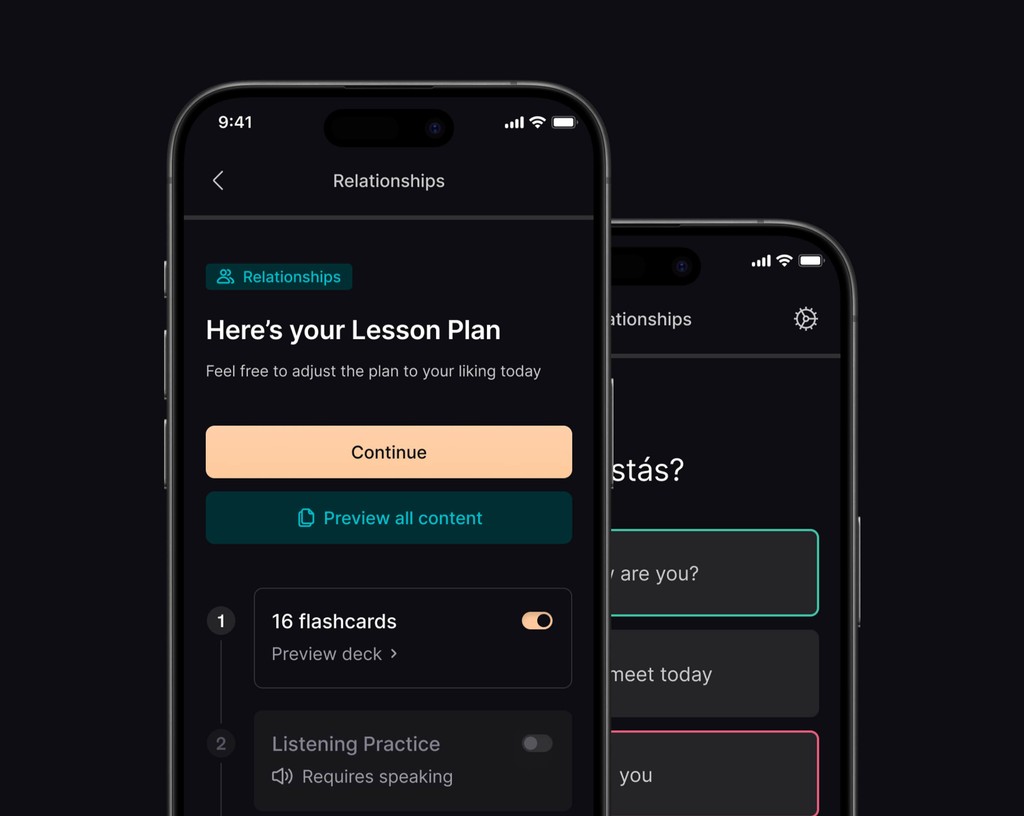Balancing AI and Human Interaction
3 mar 2025
Culture Shock
Modern language classrooms are at a crossroads: educators now have access to powerful AI tools alongside traditional teaching methods. Striking the right balance between AI assistance and human interaction can transform language instruction. Below, we explore five key areas—from AI’s strengths to the irreplaceable human touch—and best practices for deciding when to use AI versus direct teaching. Each section offers insights into how teachers can harness AI for routine tasks while preserving the nuanced, human elements of language education.
1. AI’s Strengths: Instant Feedback, Personalization, and Practice
AI-powered platforms excel at providing instant feedback and personalized practice. By tailoring lessons to individual proficiency and adjusting difficulty in real-time, AI helps reinforce language concepts efficiently. For instance, CultureShock's AI-driven system creates adaptive learning paths based directly on learners' needs. As one user, Jacob, shared: “It mimics my learning style and teaching style—you have authentic content to focus on learning, and when you come across something confusing, that's the moment to dive into it.”
Moreover, realistic conversational simulations significantly enhance immersion, enabling learners to confidently practice speaking and listening skills at any time. Kailey noted the benefit: “Other platforms don't give me the same experience—I’m just parroting. But with CultureShock, it forces me into authentic conversations, greatly increasing immersion.”
Ultimately, AI thrives in automating repetitive practice, providing personalized feedback, and adapting dynamically to students' progress, significantly boosting skill reinforcement and confidence.
2. The Irreplaceable Role of Human Teachers: Culture and Emotion
While AI supports mechanics and repetitive practice, human teachers remain essential for the deeper aspects of language learning. Language acquisition involves more than grammar and vocabulary—it’s deeply embedded in culture, emotion, and context. Teachers offer unique cultural insights, clarify idiomatic expressions, and share personal anecdotes that enrich understanding.
Critically, teachers provide emotional intelligence and motivation, forming connections with students that AI cannot replicate. Their real-time adaptability—recognizing confusion or disengagement—allows them to pivot lessons effectively, whether simplifying explanations or switching to more engaging activities. Human teachers also excel at conveying complex concepts like humor, irony, and regional dialects, elements best learned through storytelling and personal interaction.
3. Leveraging AI as a Teaching Assistant (Not a Replacement)
Effective educators view AI as a supportive assistant rather than a replacement, using technology to manage routine tasks and freeing themselves to focus on meaningful classroom engagement. For example, CultureShock enables teachers to seamlessly generate content based on class topics through simple prompts. Teachers can quickly create customized lessons, provide rubrics for assessments, and allow AI to evaluate student work based on predefined criteria.
Furthermore, teachers can import their existing curriculum into CultureShock and enhance it with AI-driven adaptive learning loops. This blended approach combines the strengths of AI—like instant practice and assessment—with the essential human interactions needed for deeper learning experiences.
4. Success Stories: Integrating AI in Language Classrooms
Educators worldwide are successfully integrating AI into their teaching strategies. When students use AI to handle routine practice outside of class, classroom interactions become more productive and engaging. Students arrive better prepared, allowing teachers to facilitate richer, discussion-based sessions.
For instance, Mike, another CultureShock user, highlighted how interest-focused coursework improved his language experience: “I had a conversation about going to a concert, and CultureShock immediately created a personalized course about that experience. Then you're actually having a conversation you might realistically have with someone.”
These examples illustrate how thoughtful integration of AI preserves the essential human elements of teaching while offering personalized, engaging learning experiences.
5. Embracing AI—Addressing Accuracy Concerns and Encouraging Experimentation
Although concerns about AI accuracy are understandable, educators should view occasional imperfections as teachable moments rather than drawbacks. By preemptively vetting AI outputs, teachers can anticipate and leverage these inaccuracies to highlight authentic language use versus AI-generated phrases.
Focusing AI’s role clearly on routine practice, adaptive drills, and initial assessments allows teachers to maximize its effectiveness. Embracing experimentation helps educators gain comfort with AI tools, discovering that the benefits—greater student engagement and increased language practice—far outweigh occasional errors.
What's Next?
As a language educator, consider piloting an AI tool like CultureShock in your classroom. Thoughtfully blending AI efficiency with human empathy positions you at the forefront of educational innovation. By experimenting and refining your teaching alongside AI, you'll empower students to learn more effectively and experience a dynamic, human-centered approach to language education.
¿Listo para aprender?
Get immersed
in any language
Únete a CultureShock hoy y aprende a conversar con confianza, en cualquier lugar del mundo.




